An effective offboarding email template is essential for ensuring a smooth transition for both you and your departing employee. Start with a clear subject line and acknowledge their resignation. Clearly state their last working day and provide a detailed transition plan for knowledge transfer. Address the return of company property and outline details about the final paycheck and benefits to avoid confusion. Maintain a positive tone, expressing gratitude for their contributions. This approach not only enhances company reputation but also fosters lasting connections. There's more to crafting the perfect offboarding email that can make a significant difference in your process.
Key Takeaways
- Clearly state the employee's last working day and outline a detailed transition plan for knowledge transfer to ensure productivity continuity.
- Specify procedures for returning company property, including deadlines and details about the final paycheck to prevent misunderstandings.
- Maintain a positive tone, expressing gratitude for the employee's contributions and emphasizing their importance to the team.
- Attach supportive resources like an Offboarding Checklist and FAQs to assist the departing employee during the transition process.
- Provide contact information for payroll queries to streamline communication and address any concerns regarding benefits and final payments.
Introduction
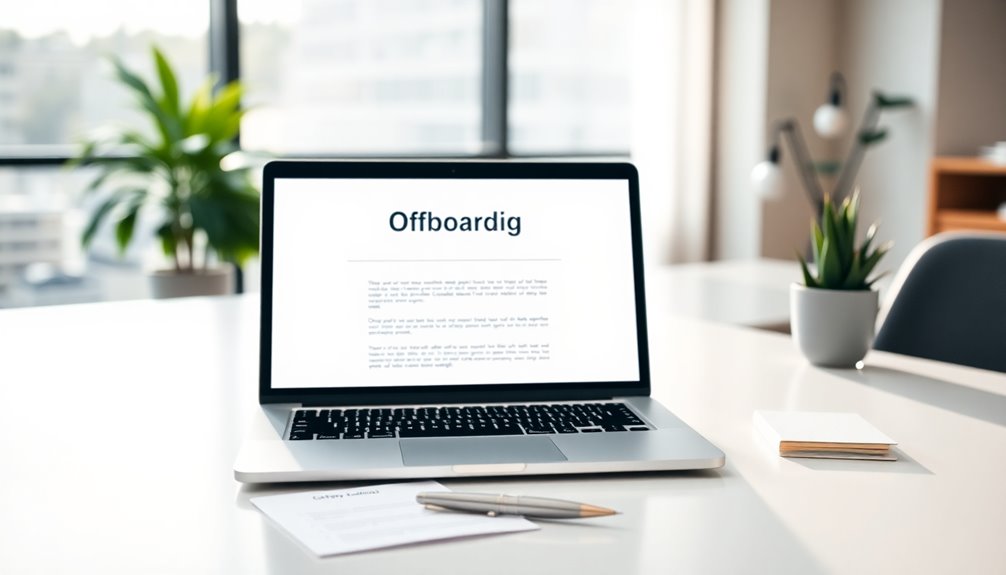
When an employee decides to leave the company, crafting an effective offboarding email is essential to ensure a smooth transition. This email serves as an official notification that kicks off the offboarding process, clearly stating the employee's final work date and outlining transition plans.
Your offboarding email should include crucial content such as expectations for offboarding tasks, instructions for returning company property, and details about benefits or PTO payout.
Timing is key; for voluntary resignations, send the email 1-2 weeks after receiving the notice. In cases of involuntary terminations, it's best to send it on the same day.
Maintaining a positive tone in your offboarding email not only helps preserve the company's brand but also fosters goodwill with the departing employee.
You might also consider including an offboarding checklist, which can provide clarity and guidance on responsibilities that need to be fulfilled before their departure.
Fosters Lasting Professional Connections
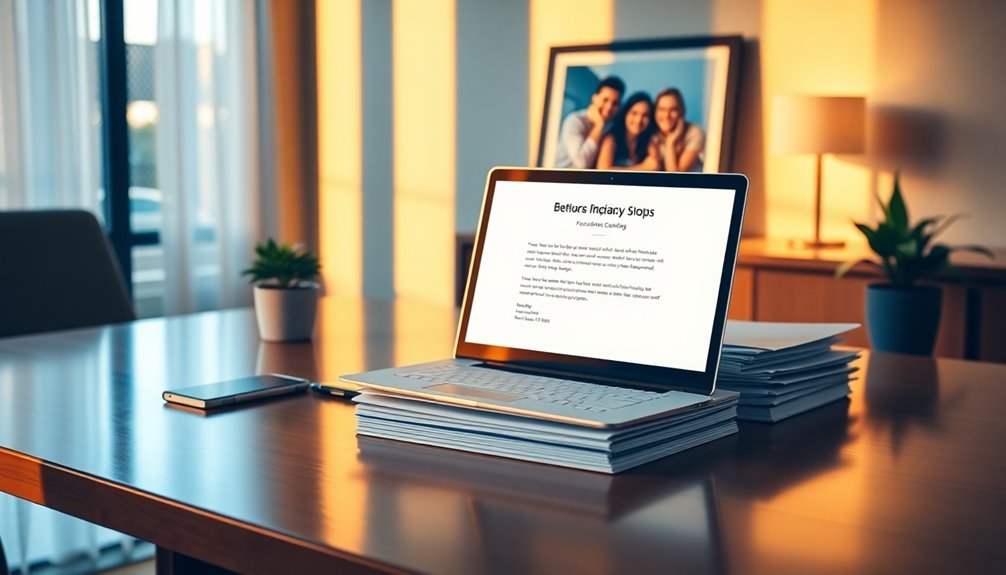
An effective offboarding email can significantly foster lasting professional connections. When you approach the offboarding process thoughtfully, you set the stage for a positive relationship with your departing employee. By following best practices in your communication, you ensure that they feel valued during their transition.
Studies show that 78% of employees who feel appreciated are more likely to maintain ties with their former colleagues and the organization. This means your offboarding emails can serve as a foundation for ongoing relationships. A smooth transition is crucial; it not only allows for knowledge transfer but also leaves the door open for potential future collaborations.
Moreover, 70% of former employees recommend their previous employers when treated well during offboarding. This goodwill can turn your departing employee into a brand ambassador, promoting your company within their professional networks.
In fact, 62% of those who leave on good terms express interest in returning, showcasing the potential for "boomerang employees." By crafting thoughtful offboarding emails, you enhance the likelihood of positive word-of-mouth referrals, ultimately attracting top talent to your organization.
Clear Subject Line
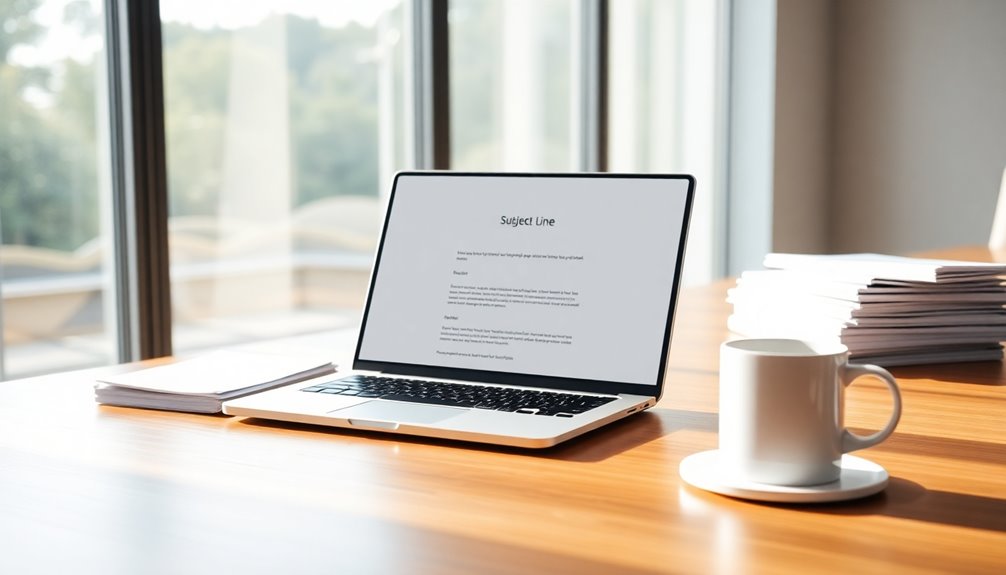
A clear subject line is essential for offboarding emails, ensuring everyone involved understands the communication's purpose right away. When an employee leaves, your offboarding email template should reflect this with specific details. A well-crafted subject line might read, "Offboarding Process for [Employee Name] – Last Working Day: [Date]." This format immediately informs recipients about the nature of the email and the timeline involved.
Using concise and professional language in the subject line also underscores the seriousness of the situation. It helps maintain your employer's brand image and shows respect for the departing employee. Always avoid ambiguous terms; clarity is crucial. By including keywords like "Offboarding" or "Departure," you signal to HR and management that this is an important notification regarding the employee's resignation email.
This approach not only enhances understanding but also aids in organizing and prioritizing emails within your systems, making the offboarding processes smoother for everyone involved.
Step-by-Step Guide to Offboarding Emails

Crafting an effective offboarding email involves a structured approach to ensure all necessary information is communicated clearly. Start by sending the email 1-2 weeks after a voluntary resignation notice or on the same day for involuntary terminations. Confirm the employee's last working day and include a transition plan for knowledge transfer. This clarity helps reduce anxiety for departing employees.
Next, address common questions regarding the final paycheck, including when they can expect it, access to personal data from work systems, and policies on benefits and PTO payouts. By providing these details, you foster a sense of security during their transition.
Don't forget to include instructions for returning company property. Specify what items need to be returned and the process for doing so.
To enhance support, consider attaching resources like an Offboarding Checklist and FAQs. These tools can be invaluable for employees navigating their exit.
Pro Tips for Maximizing Impact
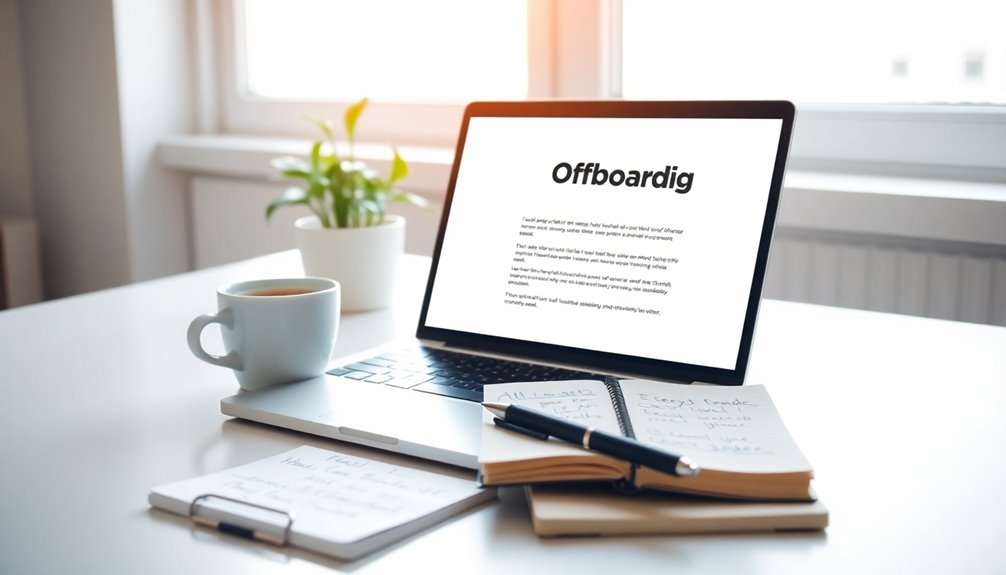
To maximize the impact of your offboarding email, focus on clear and compassionate communication that addresses the employee's needs and concerns.
Using effective offboarding email templates can help you structure your message professionally and positively, fostering goodwill during the employee's departure.
Begin by clearly outlining the last working day and the transition plan, including any knowledge transfer tasks. This sets expectations and ensures a smooth transition of responsibilities.
Detail the process for returning company property, as well as information regarding benefits and PTO payout. Clear instructions can alleviate anxiety for the departing employee.
Anticipate common questions by addressing topics like the timing of the final paycheck and access to personal data. This proactive approach boosts understanding and trust throughout the offboarding process.
Additionally, customize your email with specific details relevant to the employee's tenure, making the experience feel more respectful and appreciated.
Common Mistakes to Avoid

Offboarding emails can significantly impact how departing employees view their experience with the company, but mistakes can undermine this process. One common pitfall is failing to personalize the offboarding email. When you neglect to acknowledge the individual's contributions, it can leave them feeling undervalued.
Another mistake isn't confirming the last working day and expectations for that day, which can create confusion and anxiety during their employee departure. Clear instructions for returning company property are crucial; without them, you risk losing items and incurring additional costs.
Additionally, overlooking details about benefits and the final paycheck can lead to misunderstandings and dissatisfaction, potentially harming your reputation as an employer.
Lastly, be mindful of your communication tone. Using a negative or accusatory tone in your offboarding email can damage relationships and reduce the likelihood of positive word-of-mouth referrals from former employees.
Instead, aim for a supportive tone, encouraging employee feedback to improve future offboarding processes. Avoiding these common mistakes will help ensure a smoother transition for both the departing employee and your organization.
Resignation Acknowledgment Email Example
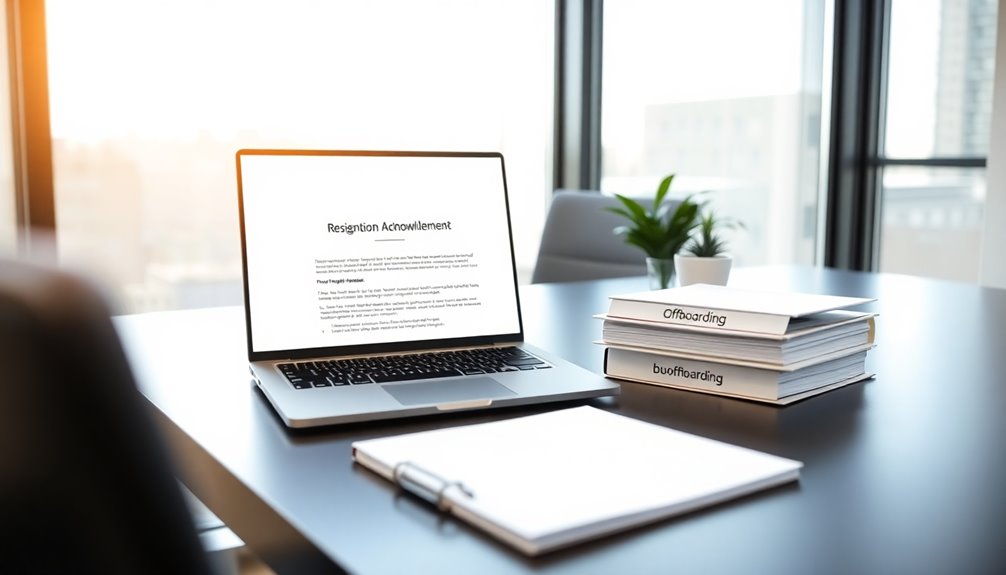
A well-structured resignation acknowledgment email is crucial for maintaining a positive relationship with departing employees. Start by confirming the employee's last working day, typically within one to two weeks from their notice date. This clarity helps everyone plan accordingly for their employee departure.
Next, outline the transition plan. Include details about knowledge transfer tasks and any project handover sessions. This ensures a smooth transition and minimizes disruption.
Don't forget to mention the return of company property, like laptops and access cards. Provide a clear process for this return before the employee's final day to avoid any confusion.
Finally, include final paycheck details. Make sure to explain any accrued PTO payout and benefits termination dates. This transparency helps the employee feel valued and informed as they move forward.
Throughout the resignation acknowledgment email, maintain a positive tone. This approach preserves your company's brand and fosters goodwill, encouraging a healthy alumni relationship.
Final Thoughts
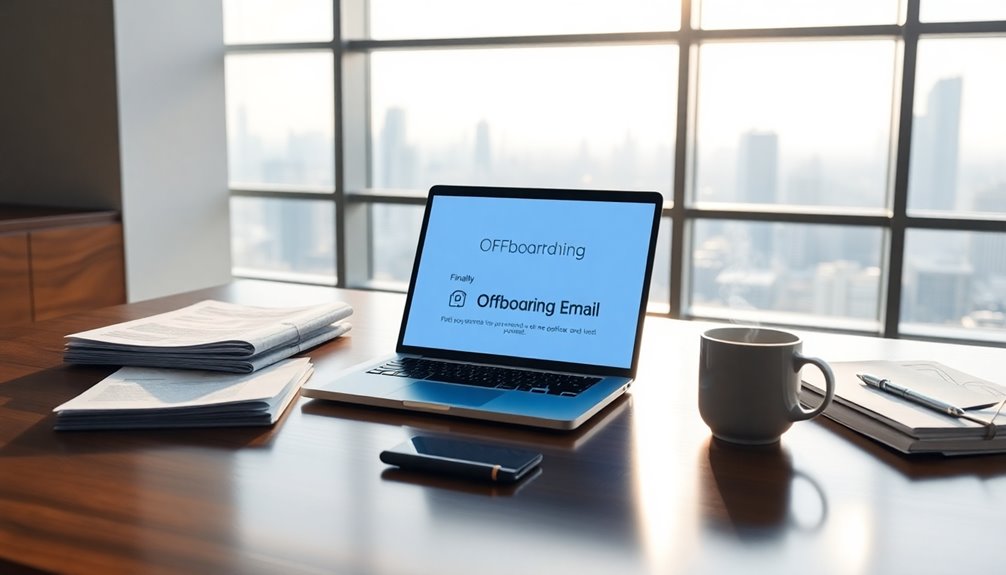
Ensuring a smooth offboarding process is essential for both the departing employee and the organization. An effective employee offboarding email should clearly outline the employee's last working day, aligning everyone on the transition timeline. This clarity helps reduce confusion during the employees' departure and keeps morale high.
Including a detailed transition plan in your email is crucial for facilitating knowledge transfer. It ensures that remaining staff can maintain productivity despite the change.
Additionally, addressing the return of company property and final paycheck details prevents misunderstandings and fosters a smooth conclusion to the employment relationship.
A positive tone throughout the offboarding email is key. Expressing gratitude not only reinforces the employer's brand but can also encourage the departing employee to become a brand ambassador.
Frequently Asked Questions
How Do You Write an Offboarding Email?
To write an offboarding email, start by stating the employee's last day and transition details. Include key points like property return and final paycheck, while expressing gratitude and addressing common questions for clarity.
How Do You Begin the Employee Offboarding Process?
To begin the employee offboarding process, notify HR and relevant team members immediately after receiving the resignation. Schedule an exit interview, prepare a checklist, and communicate clearly about expectations and final details.
What Is an Offboarding Letter?
An offboarding letter is a formal communication you receive, detailing your departure. It outlines your last working day, next steps, and addresses any final paychecks, benefits, and responsibilities, ensuring you're fully informed during your transition.
Natali – Editor in Chief (Strategy and Mastery, AI Expert) Natali, our Editor in Chief, is the driving force behind our content’s strategic direction. With a keen eye for detail and a deep understanding of market trends, Natali ensures that our content is top-notch and strategically aligned with our client’s goals. Her expertise in AI helps to seamlessly integrate advanced technology into our marketing strategies, pushing the boundaries of conventional marketing.









![Personalization Basics: Beyond "Hello [Name]" in Your Emails 27 advanced email personalization techniques](https://leftbrainmarketing.net/wp-content/uploads/2025/11/advanced_email_personalization_techniques_7bop8-260x140.jpg)
